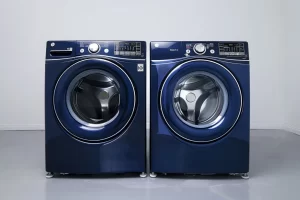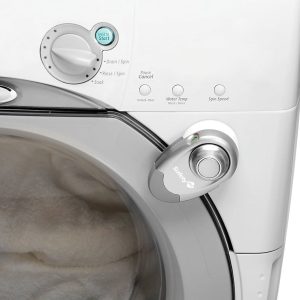Can I Wash Pillows in a Washing Machine?
Introduction:
Pillows are essential for a good night’s sleep, but they can accumulate dirt, sweat, and allergens over time. Washing pillows in a washing machine can be an effective way to keep them clean and fresh. However, it’s important to follow the right procedures to avoid damaging them. This comprehensive guide explores how to wash different types of pillows in a washing machine, taking into account their materials and specific care needs.
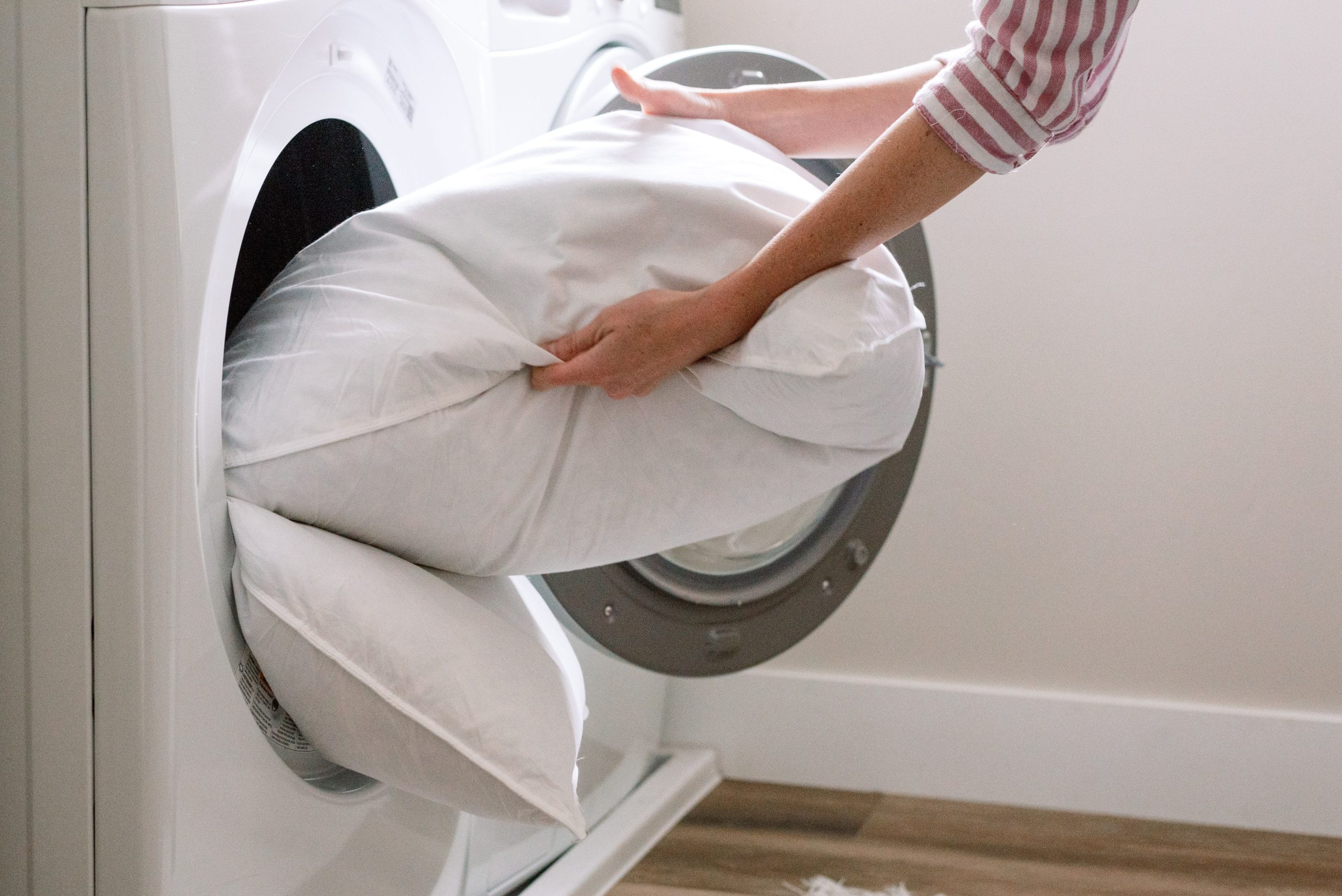
Can I Wash Pillows in a Washing Machine?
Understanding Pillow Labels and Materials
The first step in washing your pillows is to understand the care labels and the materials they’re made of.
Read the Care Label: Check the care label on your pillows. This label provides valuable information on washing instructions, including water temperature, drying methods, and any specific do’s and don’ts. Follow these guidelines closely to ensure the longevity of your pillows.
Identify the Material: Pillows can be made from various materials, each with different washing needs. Common types include:
Synthetic/Polyester Pillows: Filled with synthetic fibers or polyester, these pillows are generally more durable and can withstand regular washing.
Memory Foam Pillows: Memory foam pillows cannot be machine-washed as they can easily get damaged. They require spot cleaning or specific care.
Latex Pillows: Latex pillows are similar to memory foam in that they should not be washed in a machine. They also need careful spot cleaning.
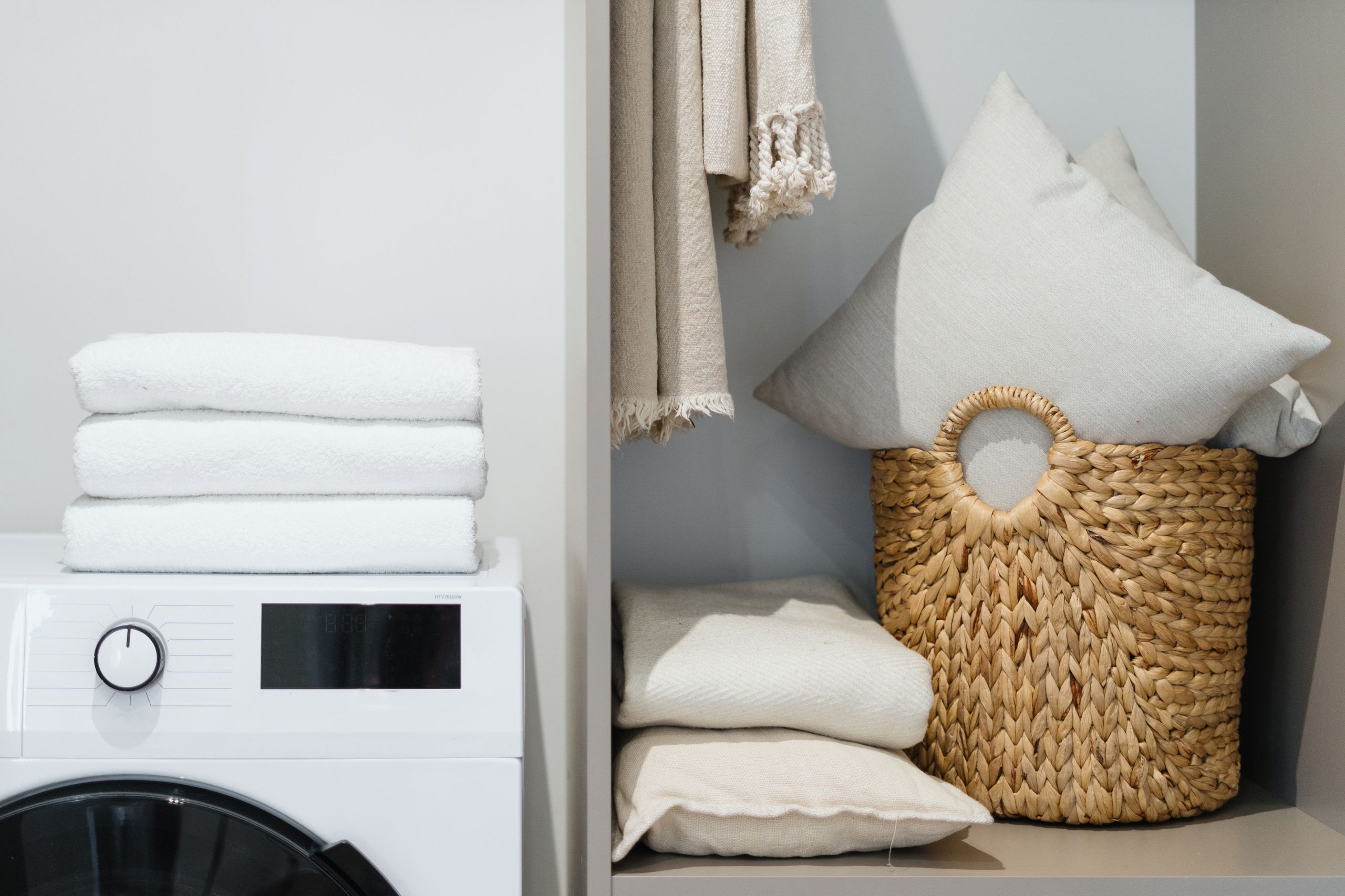
Preparing the Pillows for Washing
Proper preparation is crucial for effectively washing your pillows without causing damage.
Remove Pillow Covers: If your pillows have removable covers or pillowcases, remove and wash them separately. This ensures that the covers and the pillows get adequately cleaned.
Check for Damage: Inspect your pillows for any minor tears, loose seams, or weak spots. Repair any damage before washing to prevent the filling from leaking out during the wash cycle.
Fluff the Pillows: Fluff the pillows by hand to redistribute the filling evenly. This helps them maintain their shape and ensures thorough cleaning.
Balance the Load: To balance the washing machine, wash two pillows at a time. This prevents the machine from becoming unbalanced and ensures even washing.
Use Pillow Protectors: Consider using pillow protectors, which can help reduce wear and tear during the washing process, particularly for delicate pillows like feather and down.
Washing Feather and Down Pillows
Feather and down pillows require specific care to keep them clean and maintain their loft.
Gentle Detergent: Use a mild liquid detergent to wash feather and down pillows. Avoid using harsh detergents or bleach, as these can damage the natural filling.
Delicate Cycle: Set your washing machine to the delicate or gentle cycle. This cycle uses slower agitation, reducing the risk of damaging the filling and fabric.
Cold Water Wash: Use cold or lukewarm water to wash feather and down pillows. Hot water can shrink the fabric and cause the filling to clump together.
Extra Rinse: Select an extra rinse cycle to ensure all detergent residues are thoroughly removed. Residual detergent can make the filling feel clumpy and uncomfortable.
Rinse and Spin: After the primary wash cycle, run an additional rinse and spin cycle to remove excess water and ensure the pillows are adequately rinsed.
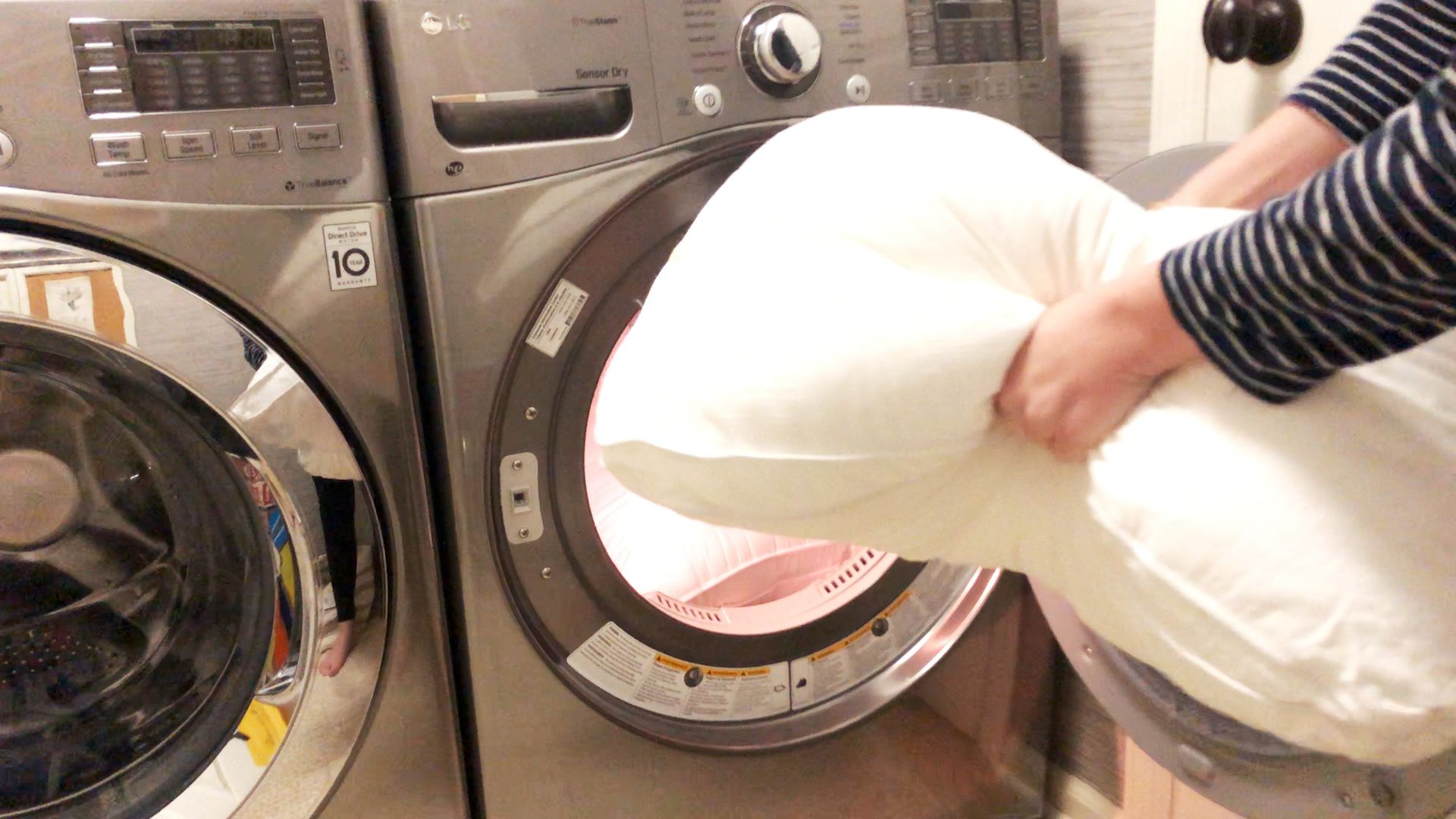
Washing Synthetic/Polyester Pillows
Synthetic or polyester pillows are generally more durable and can withstand standard washing cycles.
Mild Detergent: Use a mild, hypoallergenic detergent to wash synthetic pillows. This type of detergent is gentle on fabric and effective at cleaning.
Regular Wash Cycle: Set your washing machine to a regular or normal wash cycle. Synthetic fibers can handle more vigorous agitation compared to delicate fillings.
Warm or Cold Water: Wash synthetic pillows in warm or cold water. Avoid using hot water, as it can weaken the synthetic fibers and reduce the pillow’s lifespan.
Extra Rinse: Select an extra rinse cycle to ensure that all detergent residues are removed. This extra step helps keep the pillows fluffy and free from irritants.
Spin Cycle: Use a high spin cycle to extract as much water as possible from the pillows. This reduces drying time and helps prevent mold and mildew.
Drying the Pillows
Proper drying techniques are crucial to maintaining the integrity and fluffiness of your pillows.
Tumble Dry on Low Heat: Place your pillows in the dryer and set it to a low or no-heat setting. High heat can damage the filling, especially for feather, down, and synthetic pillows.
Add Dryer Balls: Add a few clean tennis balls or dryer balls to the dryer. These help to fluff the pillows by agitating the filling, preventing it from clumping.
Frequent Fluffing: Pause the dryer every 30 minutes to fluff the pillows by hand. Redistribute the filling to ensure even drying and check for any wet spots that need more drying time.
Air Drying: If the weather permits, consider air-drying your pillows outside. Lay them flat on a clean surface or hang them across a clothesline. Ensure they are spread evenly and turn them regularly for uniform drying.
Avoid Direct Sunlight: While air-drying, limit direct sun exposure to prevent fabric damage and color fading. Use an area with plenty of indirect sunlight and air circulation.
Ensure Complete Drying: Make sure the pillows are completely dry before using or storing them. Any moisture left can lead to mildew and musty odors.
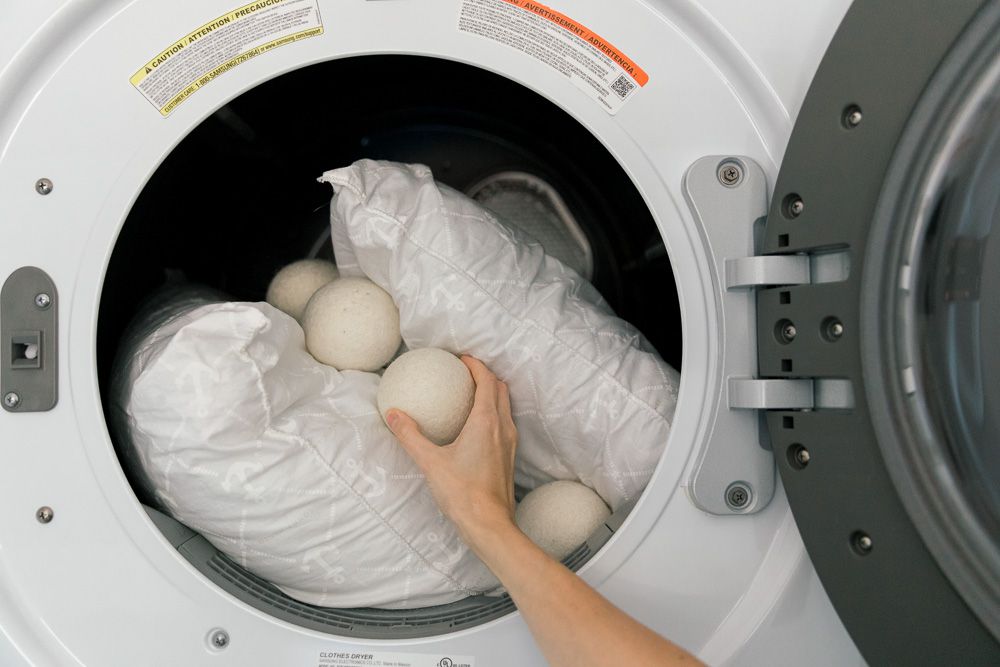
Special Considerations for Memory Foam and Latex Pillows
Memory foam and latex pillows require specific care and should not be machine-washed.
Spot Cleaning: Use a mild detergent mixed with water to spot clean memory foam and latex pillows. Gently dab the stained area with a clean cloth soaked in the solution and wipe away the residue.
Avoid Soaking: Do not soak memory foam or latex pillows in water. Excessive moisture can damage the material and lead to mold growth.
Air Drying: Allow spot-cleaned areas to air dry completely. Avoid using direct heat sources, such as hair dryers or heaters, as they can damage the material.
Using Pillowcases: Use a removable and washable pillowcase to protect memory foam and latex pillows, reducing the need for frequent cleaning.
Regular Freshening: Freshen up memory foam and latex pillows by sprinkling them with baking soda. Let it sit for a few hours to absorb odors, then vacuum it off.
Cleaning Buckwheat Pillows
Buckwheat pillows require careful handling due to their unique filling.
Remove Hulls: Before cleaning, remove the buckwheat hulls and place them in a clean, dry container. Do not wash the hulls as they can become damaged and moldy.
Wash Pillowcase: Wash the outer pillowcase according to the care instructions provided. Use a gentle cycle and mild detergent.
Maintenance Tips for Prolonging Pillow Lifespan
Regular maintenance helps keep your pillows clean and extend their lifespan.
Fluff Daily: Fluff your pillows daily to maintain their shape and prevent the filling from settling. This keeps the pillows feeling comfortable and supportive.
Use Pillow Protectors: Use pillow protectors under the pillowcases to provide an extra layer of protection against dirt, sweat, and allergens. These protectors can significantly extend the life of your pillows.
Wash Regularly: Wash pillows every 3-6 months, depending on usage and material. Regular washing helps remove allergens, dust mites, and bacteria, ensuring a hygienic sleeping environment.
Rotate Pillows: Rotate your pillows periodically to ensure even wear and maintain their shape. This practice prevents certain areas from becoming worn out or flat.
Proper Storage: When not in use, store your pillows in a breathable cotton bag or cover to protect them from dust and moisture. Avoid using plastic bags, as they can trap moisture and lead to mildew.
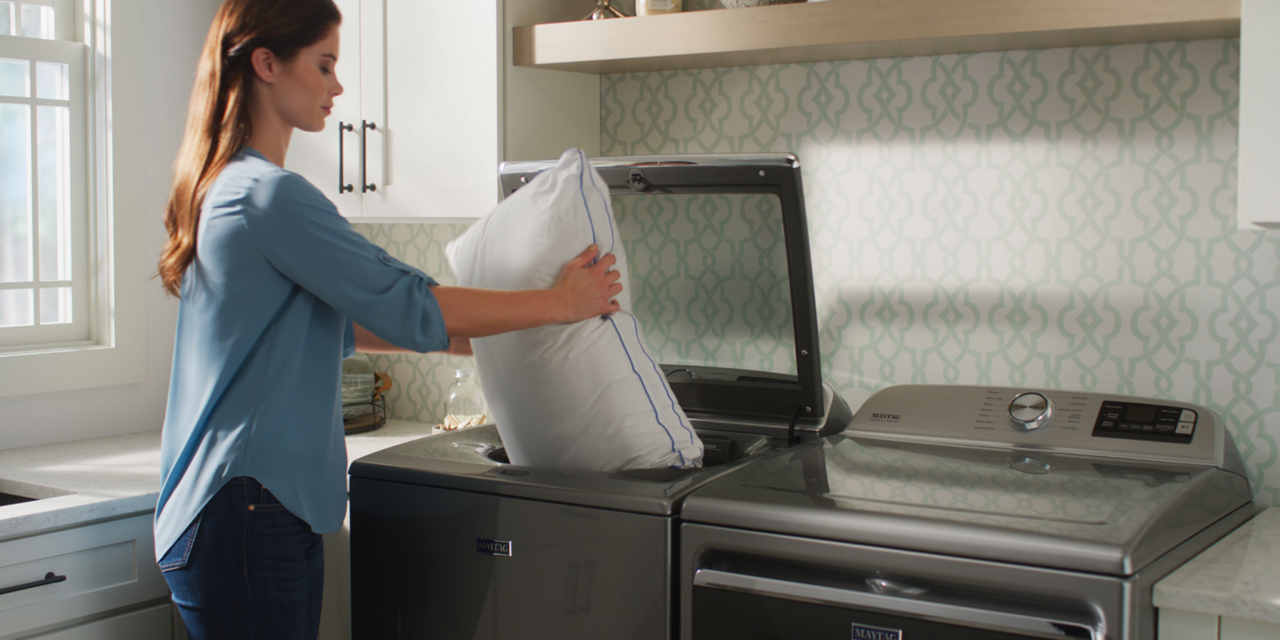
Common Mistakes to Avoid
Avoiding common mistakes ensures that your pillows remain in good condition during and after washing.
Overloading the Machine: Do not overload the washing machine with too many pillows or other items. Overloading can lead to incomplete cleaning and increase wear on the pillows and machine.
Using Excessive Detergent: Avoid using too much detergent, as it can leave residues and make the pillows feel stiff or sticky. Use the recommended amount of mild detergent for best results.
High Heat Drying: Do not use high heat settings in the dryer, as this can damage the pillow filling and fabric. Always opt for a low or no-heat setting to protect your pillows.
Insufficient Rinsing: Ensure pillows are thoroughly rinsed to remove all detergent residues. Residual detergent can cause skin irritation and affect the feel of the pillows.
Incomplete Drying: Make sure the pillows are completely dry before using or storing them. Any dampness can lead to mold and unpleasant odors.
Environmental Considerations
Adopting eco-friendly practices reduces your environmental footprint during the washing process.
Energy-Efficient Appliances: Use energy-efficient washing machines and dryers if available. These appliances consume less water and energy, reducing utility bills and environmental impact.
Cold Water Wash: Cold water washing saves energy used to heat water and is gentler on your pillows. Modern detergents are effective even at low temperatures, ensuring cleanliness without excessive energy use.
Air Drying: Whenever possible, opt for air drying. This practice saves energy and is gentler on the pillows, prolonging their lifespan.
Eco-Friendly Detergents: Choose eco-friendly, biodegradable detergents that are gentle on the environment and safe for your pillows’ materials.
Conclusion
Washing pillows in a washing machine can be an effective way to keep them clean and fresh, provided you follow the correct procedures and care guidelines. By understanding the specific needs of different pillow materials, preparing them properly, selecting the appropriate washing and drying methods, and adopting regular maintenance practices, you can ensure your pillows remain in excellent condition. Paying attention to common mistakes and environmental considerations further enhances the longevity and hygiene of your pillows, promoting a healthier and more comfortable sleeping environment.
